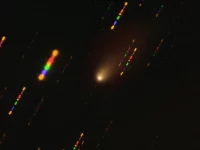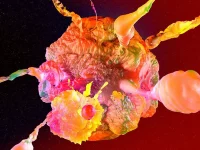Nature. Swiss National park’s plants hold secrets of past, keys to future.

National Parks. August 11, 2014. At the 100-year-old Swiss National Park, research has always been the highest priority. There, the longest-running meadow observation project in Switzerland has defied expectations and uncovered buried secrets.
Biologist Martin Schütz kneels on a plot known as TR six to count grasses, sedges and flowers. He ticks one after another off his list. It takes about half an hour to cover one square metre of this meadow grazed continuously by deer, located on Alp Stabelchod in the eastern canton of Graubünden, 1,950 metres above sea level in the Swiss National Park.
Data has been collected here since the summer of 1917, making this former alp the longest-observed meadow in Switzerland. The entire space is divided into grid squares of 20 by 20 metres for continual observation, scientifically known as “succession research”.
« In this area, where nothing seems to grow and you’d think the vegetation would be completely sparse, 17 species of plants thrived in 1921. Today there are 51, » says Schütz. « So there are now three times more plant species in the plot than in the days when it was used as pasture for cattle.”
“Stabelchod has six areas like this,” he continues. “They have all developed the same way. »
Three generations of researchers
The 56-year-old Schütz represents the third generation of researchers to lead the long-term study.
“These are purely botanical long-term monitoring plots, so insects and faeces are not counted,” he explains.
“In 1917 it was laid down what you can do here. And that can’t be changed, otherwise you can’t compare like with like,” he adds as he takes a seat on a long bench in front of a former Alpine hut in the pasture.
In 1914, when the park opened, experts thought pasturelands would soon return to forest. With research a key element of the park from the beginning, the goal was to scientifically record how reforestation occurred.
But it took much longer than expected for nature to play along. The first botanist on site, Josias Braun-Blanquet, wrote in 1931: “This reforestation will not take place as I thought it would.”
Today, researchers believe it will take centuries longer for the forest cover to re-establish itself.
« If it continues exactly as it has done in the past hundred years, without major disruption, with no change in the populations of hoofed animals, without large predators, then it will still take about 600 to 700 years, » estimates Schütz.
And Braun-Blanquet was right about another thing: Schütz confirms his predecessor’s second hypothesis that the vegetation would change quickly in the areas where cattle grazed.
Secret files uncovered
After Braun-Blanquet came Balthasar Stüssi, who from 1939 recorded the vegetation on the control plot and made it his life’s work for almost 50 years. First, he marked the areas with wooden pegs and standardised their shape.
But unlike Braun-Blanquet, Stiissi didn’t really mix much with other researchers, as park historian Patrick Kupper writes in his book Creating Wilderness. After his retirement, Stüssi continued his work, but he encrypted the data.
“The longer he went on, the more it became like his private property,” cites Kupper.
« The Research Committee of the National Park did not even know if he was still carrying on his recordings,” Schütz elaborates. “Although he had taken photographs, he had faked these photos on purpose so you could not find the right area, because he was afraid that his colleagues would disturb the plots.
Stüssi kept the records in his garage. After his death in 1992, his secretary contacted the Swiss Federal Institute for Forest, Snow and Landscape Research in canton Zurich about his research.
« It was a huge mess, » recalls Schütz, who continues to work for the institute. “Stüssi had nicely documented where the areas were, but at that time they had no coordinates. The areas hadn’t been measured, so we had to look for the pegs he had put in. »
For four years, Schütz and his team scoured the plot locations on Stabelchod and in other meadows.
« We were out every summer for about six weeks and, thanks largely to an older park ranger whom Stüssi had trusted a bit, discovered many of the plots and where they really were,” he says. “Of 160 plots, we found 150.”
Pressure to publish
Although such long-term observations may appear unique and valuable, they hardly cause a stir in today’s scientific community, where pressure to publish is high.
But Schütz sees potential for the future nonetheless. To him, the control plots offer ideas « which one can use for designing modern experiments. And you can publish those. So the control plots are a source of ideas.”
For about 15 years, the National Park has also allowed experimental observations in so-called trial areas where, for example, Schütz and his students have kept different species of animals away from the grazing land to observe their influence on the smallest possible areas.
The researchers found that the insects – « especially grasshoppers, aphids and crickets » – ate as much biomass from this continuous grazing pasture as the hooved animals. « We never expected that, » said Schütz.
Between 30 and 40 deer, about ten marmots and, according to projections, several million insects live on Stabelchod today.
How to proceed?
As a teenager, Schütz wanted to be a shark researcher. But his life’s work has become looking after these control plots, and soon he’ll have to find a successor.
« I retire in ten years,” he foresees. “Depending on my health, I will be able to look after [them] a little bit longer on a private basis. »
He admits finding someone to take over could prove tricky, as the research environment in biology is constantly changing.
But at least Schütz will leave his post knowing « everything is ordered and archived in the National Park Centre in Zernez, so that someone could come along and know where the areas are and what has happened ».
“Everything is measured,” declares the botanist before leaving the site behind for the day and heading back to the car park.
What’s the point of park research?
Scientific research records all changes in the Swiss National Park. Long-term research is especially important to give a better understanding of the natural processes taking place, say park authorities. Research is one of the core activities of the National Park, as is clearly stated in the federal law laid down in 1980.
(Source: Swiss National Park)
Centenary celebrations
The Swiss National Park opened on August 1, 1914 as the first nature reserve in the Alps. Numerous celebratory events are taking place in 2014 to mark the park’s centenary, particularly over the summer. The major celebration La Festa takes place in Zernez on August 1 with a full programme for young and old. From July 11 to August 16, the open-air spectacle Laina viva (living wood) about « the legendary founding of the Swiss National Park » is being performed in Zernez. The visitor centre is hosting a jubilee exhibition until October 25, and another exhibition is being shown at 16 of Switzerland’s largest shopping centres. (swissInfo)










